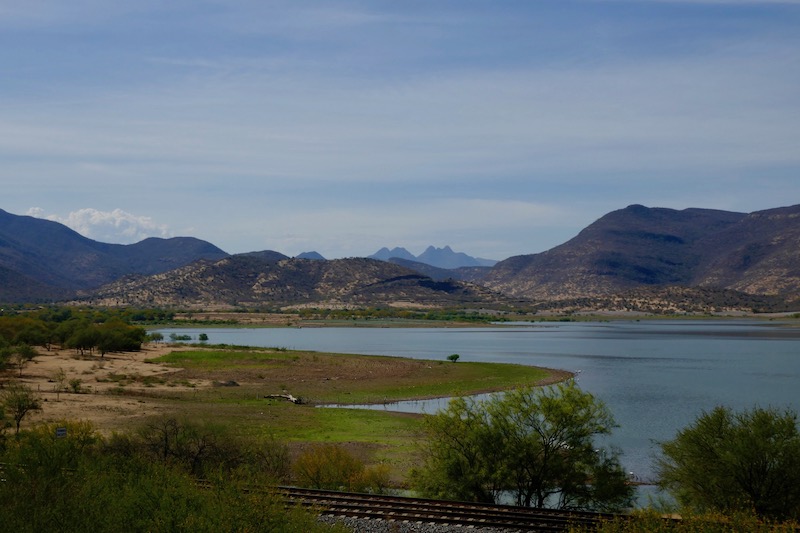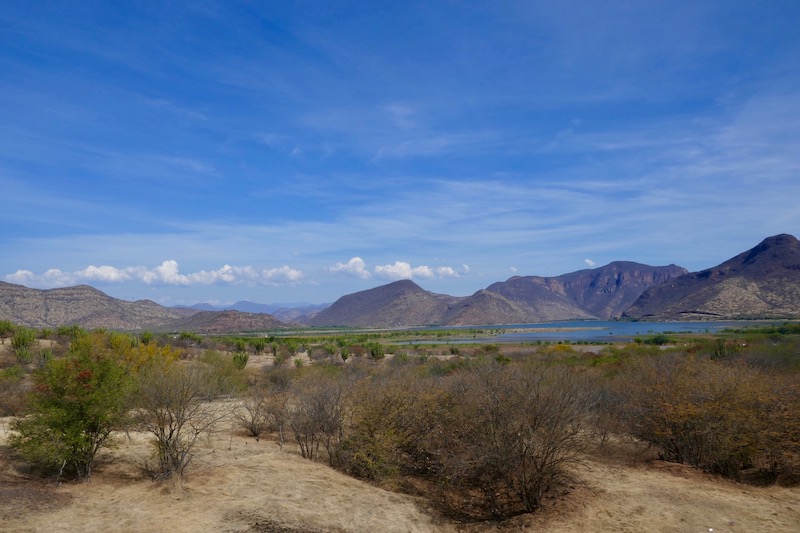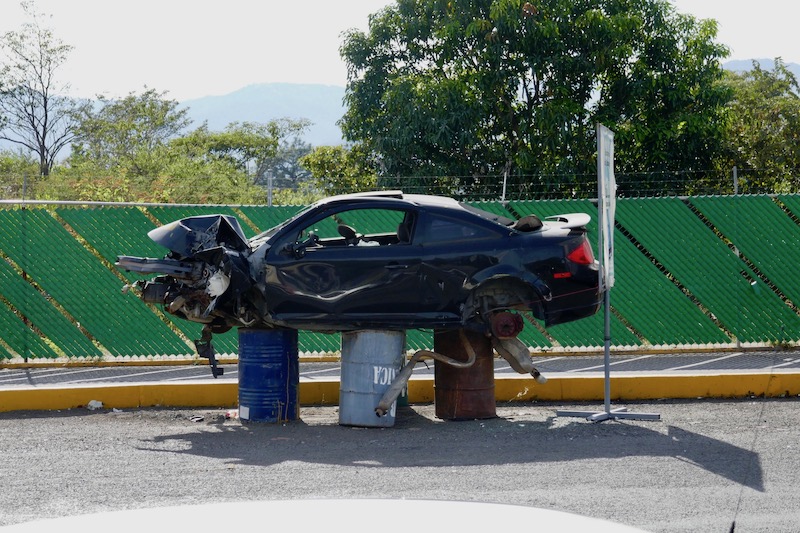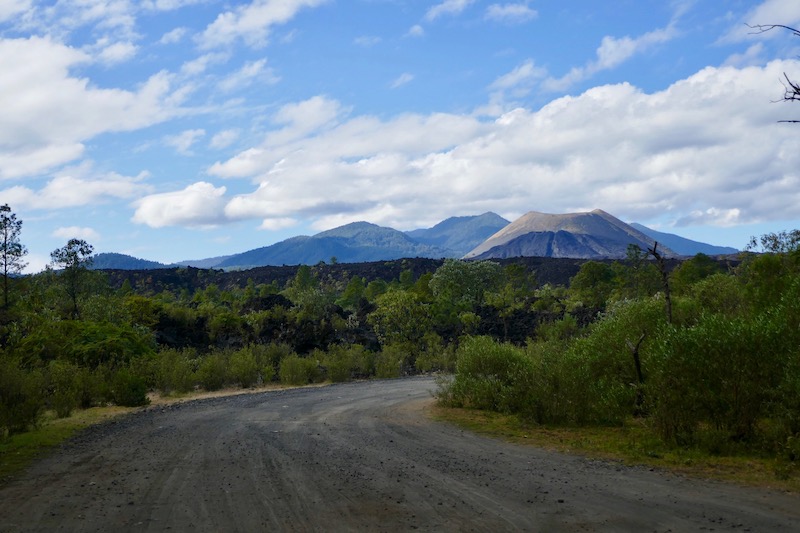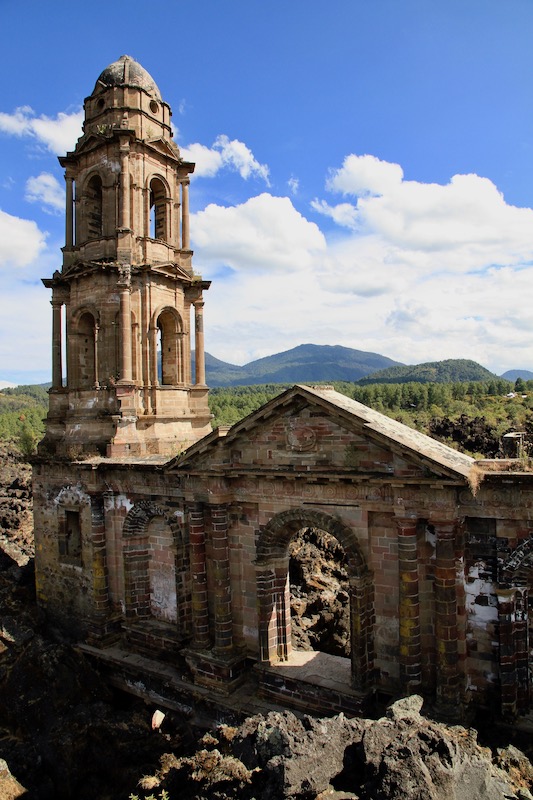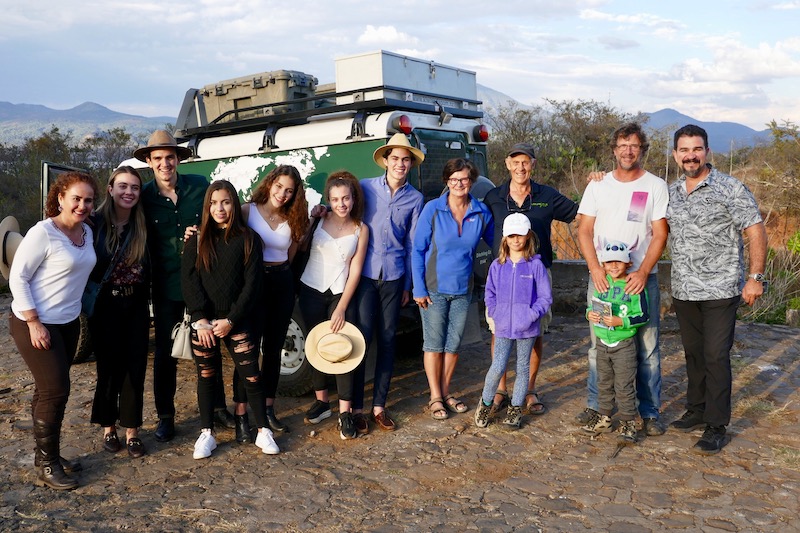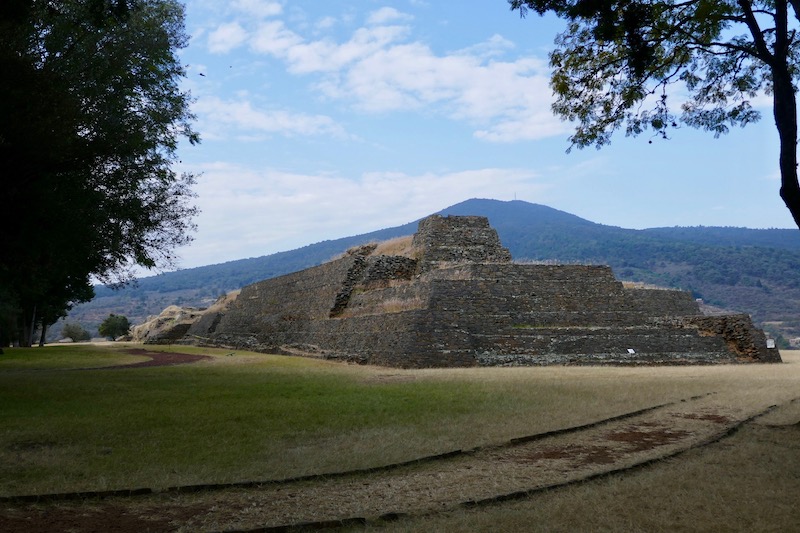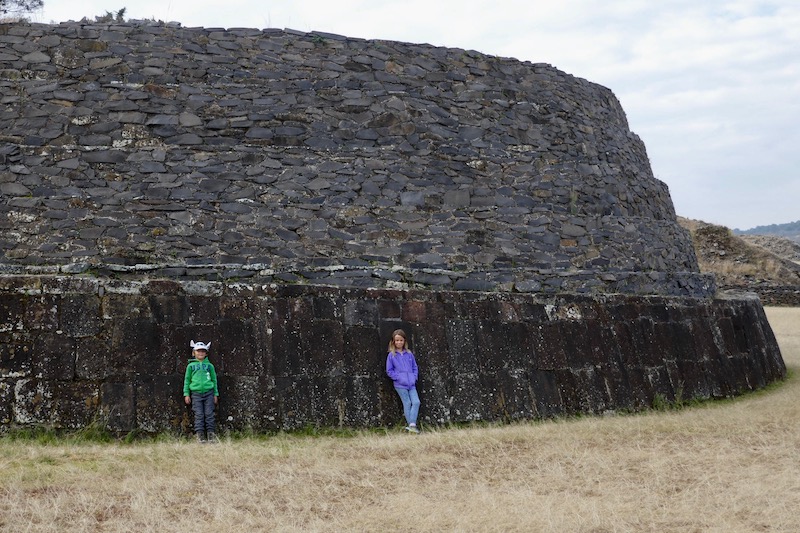Volcanoes & buried villages at 2,500 meters.
Hoping for a break from the heat we headed inland to the volcanic and avocado growing region of Urupan in search of the buried church we’d read about. Following advice, we took the toll roads for safety, and a break from topes, the 280 km cost 300 pesos ($20 CAD). At one toll booth a car is on display reminding how speed can kill. It’s a long and steady climb and baking hot, especially on the sunny side, my side. The truck doesn’t have air conditioning, the thermometer reads 33’C. The windows are down and a hot air blows through the cab, Charley puts up the sunshade over her window, giving instant relief. The kids are enjoying the drive, we put the music on and crank it loud and sing along. Dad and Jen are right behind us in the Land Rover. The country side looks much like the desert part of the Okanagan. A man made hydro electric dam have an abundant amount of bird life, we see hundreds of what could be white Stalks.
The navigation takes us through the city of Urupan and out to the country through another town with even smaller streets and into the hills. It’s later in the afternoon, but nowhere for us to stop for the night, so we continue on. Still climbing, now on a narrow steeper and windy road, the pavement ends giving way to the next 15km of slow going, well used, bumpy dirt road. The truck handles it well, but it’s been a long day of driving, we’re all exhausted. Navigational error, I just followed the recommended highlighted route, upon closer look we would have been better to have gone the north side, shorter faster and less windy. Oops! just as well it’s a driving trip of exploration and happily going where we’ve never been before. Dad’s altimeter reads 2,500m and we haven’t yet reached the top, the trees are now pine and feels like we are back in Canada.
We are headed to the buried church of Paricutin, it’s getting late so we pull off into a clearing in the trees and camp for the night at 6pm, it’s dark soon after. Blissfully cold we are needing a fleece & jacket, the camper quickly cools and the fridge starts to work properly again. In the coastal heat it can’t remove hot air with hot air. The kids jump into bed & watch a movie while I cook. The road is quiet, the occasional vehicle drives by, only one stops in, 3 men get out of a marked forestry truck and introduce themselves. We ask if it’s ok to camp here for the night, they say no problem and are on their way, I think they were just curious.
Undisturbed we sleep soundly and roll on by 9 the next morning. Soon we can see the lava fields & a smoking volcano in the back ground. As the story goes, roughly 75 years ago, a farmer, while ploughing his flat field saw the ground tear open venting steam, he tried to plug the hole that kept growing, realizing his efforts were futile he quickly fled raising alarm to the villagers. Over the next 8 years the volcano gained 2,800 meters in height, continuously erupting, the slow moving lava consumed all in its path, including two villages and nearly all the church.
We are the first ones there & park next to the horse hitching post and walk through the makeshift stalls as vendors set up for the day, waving us in to ensure we promise to return for lunch and buy their wares.
Clambering way over the sharp rock you get a real sense of natures might. It’s easy to picture the slow moving molten wall the leading edge glowing, burning everything in touches. Liquid rock folding over itself tearing open as it cools, leaving twenty to thirty foot high walls. All that survived of the church is the entry facade and bell tower at one end and the altar wall at the other. As the sun climbs, the freshly decorated altar reflects how much the people still love to come here and worship.
As promised we returned to eat lunch made by the local people. Traditionally prepared on a fire heated cast iron plate the delicious blue corn tortillas are served with cheese, mushrooms, smoked meat, pickled greens, and all the hot sauce you could handle, for just 20 pesos each, which is about $1.30 CAD, not to be piggy, but happy to support we all had 2 each. Our drive out on the Northern road was much shorter, less steep and a lot easier than the drive in, lesson learned.
What’s not covered in lava is covered in groves of avocado trees, some happened to be growing at the perfect height for hands to reach out and just pluck a few. We were careful as each avocado farm is fully fenced with barb wire at the top and signs indicating that there are armed men and guard dogs on duty.
Driving on to Morelia, we make camp for the night in a carpark of the Yacatas de Tzintzuntzan ruins, with a great view overlooking the lake. As the ruins close we are approached by a well dressed family from Morelia interested in the vehicles, what we are doing and why. Alejandro, Lydia and their children and partners. Their english was very good and we all enjoyed talking for an hour. They gave us some great recommendations of places to visit and camp in CDMX. The next morning we had a look at the ruins, impressive and old. We drive on in search of the Monarch Butterflies winter migration grounds.

